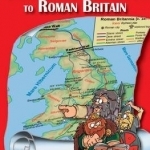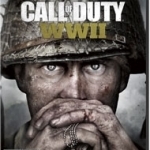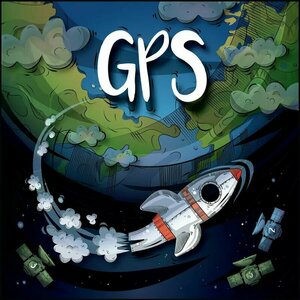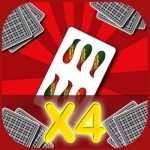
La Briscola x4
Games and Entertainment
App
"La Briscola X4" the first app to play "Briscola" in 4 different mode and with 4 players! - Classic...

Dragon Revolt - Classic MMORPG
Games
App
The Winged Destiny Update is on the horizon! A new main quest will be unsealed, and players will...

Planes, Passports and Porkie Pies - Slice One: Stirring Tales of UK Border Control (but Not as Shown on TV)
Book
Mike Clarke worked for 18 years in Immigration Control in London's larger airports, the last 9 as a...

Connecting Places, Connecting People: A Paradigm for Urban Living in the 21st Century
Robert Cervero and Reena Tiwari
Book
What is a better community? How can we reconfigure places and transport networks to create...
Getting Started with Handplanes: How to Choose, Set Up, and Use Planes for Fantastic Results
Book
With this book and a well-chosen and correctly maintained set of planes, you will be able to handle...
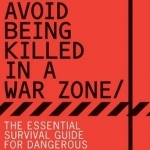
How to Avoid Being Killed in a Warzone: The Essential Survival Guide for Dangerous Places
Book
Everyone needs this book if they want to know how to get out of difficult situations whether at home...
Never Stop Designing Spaces: An Emotional Journey Through Ten Places of Italian Life
Book
In this lavishly illustrated book, the reader is taken on an inspiring tour to some of Italy s most...
Gareth von Kallenbach (980 KP) rated the PC version of Call of Duty WWII in Video Games
Jun 19, 2019
Last year’s Call of Duty: Infinite Warfare did not sell as well as other in the series had in recent years, and many fans were upset or divided over a futuristic setting that involved spaceships, energy weapons, and futuristic locations and technology.
It should be noted that the series has three developers working on games so developer Sledgehammer likely started work on the game before Call of Duty: Black Ops 3, and Call of Duty: Infinite Warfare shipped so the return to WW2 was something long in the planning.
The game opens with D-Day and players play as a young Private who is thrown headfirst into the conflict and learns the horrors of war as well as duty, honor, and sacrifice through his missions and interactions with members of his platoon.
Over the course of the missions, players will battle in highly-detailed maps and locales ranging from forests, bunkers, beaches, and bombed out cities as the Allies advance deeper and deeper into enemy held locales. The various locales for the game are so highly-detailed that they seem right out of a movie and would be a dream come true for location scouts looking for filming locations.
As anyone who has played a call of Duty game knows, they will be faced with waves of enemies to fight off as well as the usual stealth and vehicle missions. This time out there are a couple of driving missions as well as a clever one in a tank and one airborne fighter escort.
The attention to detail is very good as enemy Panzer tanks can take any fire from your tank head on, but have weaker armor in the bank which leads players to have to flank the enemy to survive.
Another new wrinkle is the health system which does not regenerate in the story mode and instead requires players to take cover and use a first aid kit in order to heal. The multiplayer portion does use a regenerative system so players can avoid any major disruptions in battle.
I really liked Josh Duhamel as the rough Sargent with a backstory. He was a very interesting character that kept me guessing as to his motivations and next moves as the story advanced.
Players could also call in ammo, mortar strikes, and health by requesting them from select members of their platoon. This could be tricky as when pinned down, having to move to another character to get needed items added to the challenge.
The weaponry was appropriate for the time and I had to adjust to slower load times, accuracy issues, and such with older tech, but it did give me a much greater level of immersion.
While I did enjoy the solo campaign, it did at times seem very familiar and as if I had seen and played some of it all before. I guess that is the trick with a series that has run as long as Call of Duty has as certain aspects of the gameplay are expected and while locations, weapons, locations, and characters may change, some things are going to be constant throughout the series.
The multiplayer aspects of the game really shine as not only are there numerous multiplayer modes, players can now pick a class such as Airborne, Recon, etc. which each have their own weapons and abilities and allow players to pick a division that best matches their abilities and gameplay style.
This comes in very handy in the new War mode where teams much battle one another to accomplish various objectives. Such as escorting tanks, protecting or stealing gas, and taking or defending key locales. My only issue is that this mode and many maps are camp fests where people with scoped rifles can easily hide in the back part of a map and pick off players as they spawn or enter the map. It seems far more pronounced in this game and leads to some frustrations. There is also the matter of iffy hit detection where players take half a clip from a machine gun point blank and yet can absorb them and one shit kill a player all while you unload on them.
There is also a very good Zombie mode where players take on wave after wave of undead soldiers as they attempt to get power restored and activate technology. The speed of the game is intense, the enemies numerous, and the ability to arm, armor up, and accessories your character is key as is having a good team around you.
As one person said that is Call of Duty and you know what you are in for if you have played any of the prior games. As such Call of Duty: World War 2 is not a radical new direction for the series, but rather a return to what made the series and is like slipping into a comfy pair of slippers after a long day., Familiar and comfortable and is in my opinion what the series needed.
http://sknr.net/2017/11/06/call-duty-ww2/
Purple Phoenix Games (2266 KP) rated GPS in Tabletop Games
Mar 23, 2021
GPS is a racing game in which players are launching satellites into orbit, and attempting to be the first to organize their satellite chain in numerical order. To setup the game, assemble the planet pieces and spinner, and give each player their 12 numbered satellites. Players shuffle their satellites face-down, and then flip 3 of them face-up. The game is now ready to begin!
Each turn, a player will spin the spinner. Once the spinner has stopped, every player will place one of their 3 face-up satellites in the pointed space. Players then each reveal a new face-down satellite, and turns continue in this fashion. After 12 turns, all players will have all of their satellites in play around the board. Now, instead of placing a new satellite when the spinner stops, players will move an already placed satellite to the pointed space. If the spinner ever stops on a space where you already have a satellite, you just move one of your satellites to the nearest space in either direction that doesn’t already have one of your satellites. The goal of the game is to arrange your satellites in ascending numerical order, starting from the start line on the board. At the start of a turn, if a player has completed that goal, then they win!
Seems simple enough, right? That’s the point! GPS is supposed to be a game that is easy to teach and fast to play. There is a small amount of strategy involved in decided which satellites to place where, to help set yourself up to be the fastest to organize them numerically. More often than not, though, the ‘right’ move is the obvious one to take, so don’t be expecting a brain burner with this one. All in all, simple gameplay and mechanics that are easy for pretty much any age to grasp.
The biggest issues I have with GPS actually are the components. Don’t get me wrong – the quality of the components is great! It’s just how they affect the gameplay that is disappointing. For starters, the satellites for each player are nice and sturdy cardboard. But the size of the spaces around the game board are a little smaller than the satellites, making it difficult to fit them properly and clearly in a specific space. The next issue is with the spinner/game board itself. The spinner has a small rubber bottom to help avoid unwanted movement, but unfortunately it does little to stop that problem. Almost every time the spinner is spun, the game board moves on the table. The movement of the board knocks any satellites that are in play out of alignment. With the oversized satellites and the small board spaces, it’s sometimes hard to tell in which space a satellite was originally placed. These issues just take a fast, light-hearted game and turn it into a frustrating filler for me.
Overall, I would say that GPS is a good game in theory, but it was just not necessarily executed well. Perhaps if the components were more conducive to the gameplay, I would have different thoughts, but those problems just leave a sour taste that makes me want to skip over it when looking for a filler. This is a game I might pull out for younger gamers, but not one that I see getting a lot of table time with my regular group. Purple Phoenix Games gives this one a sputtering 6 / 12.

